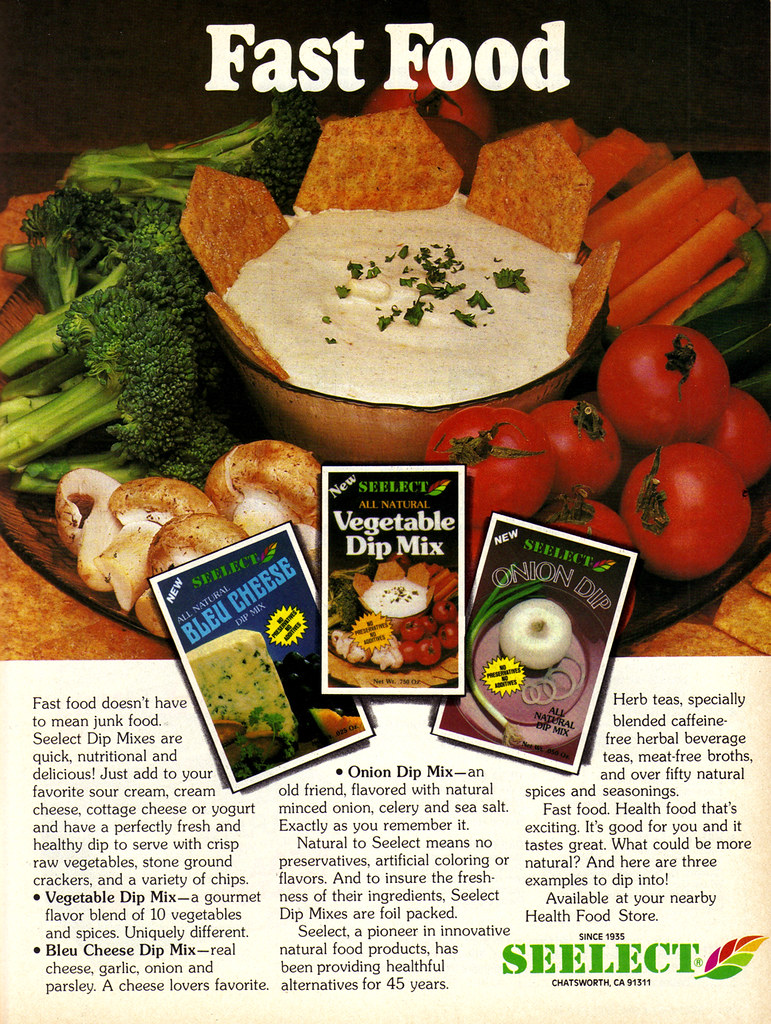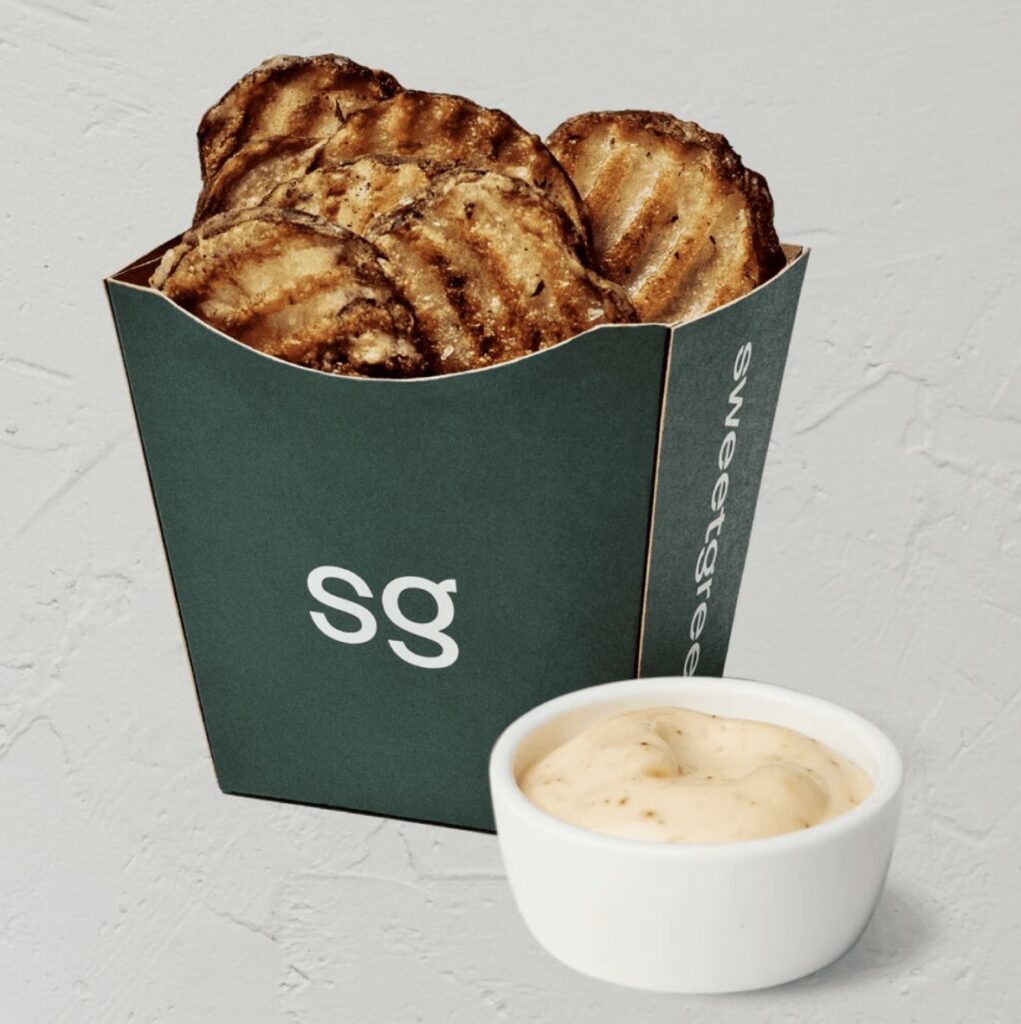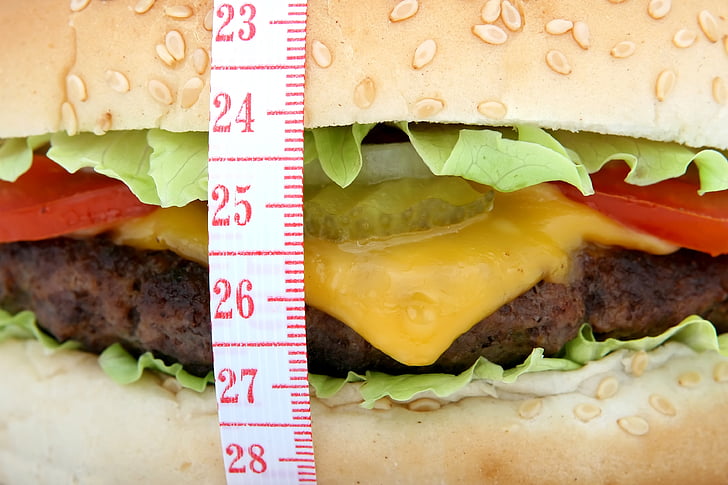
In a world inundated with choices, especially when it comes to quick and convenient meals, fast food establishments often present their offerings with enticing labels and seemingly healthy claims. From “calorie-free” sodas to “low-fat” burgers, these declarations are designed to catch your eye and influence your purchasing decisions, sometimes making you feel better about a less-than-ideal choice. Yet, as any seasoned consumer knows, the devil is often in the details—or, in this case, the fine print on the nutrition label.
Navigating the landscape of fast food nutrition requires more than just a glance at the prominent buzzwords. What seems straightforward on the surface can be surprisingly nuanced, with regulatory definitions often allowing for interpretations that might surprise or even mislead the average diner. This isn’t necessarily about outright deceit, but rather a gap between common perception and the precise, legally defined meanings of these terms. As Nancy Zawicki, MS, RDN, LDN, a dietitian at Northwestern Medicine, aptly puts it, “It’s important to be aware that what’s on the face of a food package may not reflect the nutrition facts label on the back.”
For anyone consciously managing their diet—whether for weight loss, to mitigate disease symptoms like diabetes, or simply to make more informed choices—understanding these nuances is absolutely essential. “You can’t trust front label lingo. Nutrition facts are the FDA facts,” Zawicki emphasizes. This article aims to pull back the curtain on some of the most common and potentially misleading claims you’ll encounter, particularly within the fast food realm, transforming you into a more educated and empowered consumer. We’re going to break down exactly what the U.S. Food and Drug Administration (FDA) means by these popular terms and explore how they impact your quest for healthier eating.

1. **Fast Food Items Advertised as “Calorie-Free”**The phrase “calorie-free” has long been a beacon for dieters, promising guilt-free indulgence without the added energy load. Many fast food beverages, condiments, and even certain sauces proudly display this claim, encouraging consumers to pile them on without a second thought. However, the common understanding of “calorie-free” as absolutely zero calories isn’t quite accurate under FDA regulations.
According to the FDA, a food product can legitimately carry the “calorie-free” label if it contains five or fewer calories per serving. This is a crucial distinction, especially in a fast-food context where serving sizes can sometimes be deceptively small, or where multiple “calorie-free” additions might accumulate. For instance, adding several packets of “calorie-free” dressing or multiple splashes of a “calorie-free” sauce could, in reality, contribute a small but non-zero number of calories to your meal.
While five calories per serving might seem negligible, consistently underestimating these small amounts across several items or meals can gradually impact daily caloric intake, especially for those meticulously tracking their numbers. It highlights the importance of not just trusting the prominent front-of-package claims, but also understanding the precise definitions that govern them. Being an educated consumer means looking beyond the marketing and appreciating the scientific parameters.

2. **Fast Food Items Advertised as “Sugar-Free”**Similar to “calorie-free,” the term “sugar-free” is another widely used marketing tool, particularly for desserts, drinks, and sauces in fast food restaurants, appealing to individuals concerned about sugar intake, such as those with diabetes or aiming for weight management. The immediate assumption is that such items contain no sugar whatsoever. Yet, the reality, as defined by the FDA, paints a slightly different picture.
For a fast food item to be labeled “sugar-free,” it must contain 0.5 grams of sugar or less per serving. This threshold allows for a trace amount of sugar to be present, which might include naturally occurring sugars in some ingredients. More importantly, the context explicitly states that “these foods may include both natural and added sugar and often contain artificial sweeteners.” This latter point is particularly significant.
Artificial sweeteners, while not contributing traditional sugar calories, can have their own set of considerations for some consumers, ranging from digestive sensitivities to broader concerns about their long-term health effects, which are subjects of ongoing debate outside the scope of factual information given. For fast food patrons, understanding that “sugar-free” does not mean “sweetener-free” is vital for making choices aligned with their dietary goals and preferences, ensuring they are aware of what they are truly consuming.
Read more about: Remember These? A BuzzFeed Blast from the Past: 15 Retro School Snacks We Miss So Hard!

3. **Fast Food Items Advertised as “Fat-Free”**The “fat-free” craze swept through the food industry decades ago, promising a healthier alternative by removing dietary fat, often seen as the primary culprit for weight gain and heart disease. Fast food establishments quickly followed suit, introducing “fat-free” options for dressings, side dishes, and even some protein components. The perception was that choosing “fat-free” automatically made a meal healthy, a notion that has since been significantly nuanced.
Under FDA regulations, an item can be labeled “fat-free” if it contains 0.5 grams of fat or less per serving. This definition, similar to “calorie-free” and “sugar-free,” means that a minute amount of fat can still be present. The more significant issue often arises from what is used to replace the fat to maintain palatability and texture.
Many fast food items that are made “fat-free” compensate for the lack of fat by increasing the sugar, sodium, or artificial ingredient content to ensure the product remains appealing to consumers. Therefore, a “fat-free” fast food item might not necessarily be lower in calories or healthier overall if it’s laden with other ingredients that counteract the benefit of reduced fat. This underscores the core message: an educated consumer looks at the complete nutrition profile, not just one isolated claim.

4. **”Low Calorie” Snack Foods**Moving beyond the “free” claims, we encounter the category of “low” claims, which also have specific FDA definitions that can impact perceptions of fast food healthfulness. “Low calorie” is a term frequently applied to smaller snack items or side dishes available at fast food outlets, suggesting a more diet-friendly choice for a quick bite. However, the definition of “low” varies depending on the type of food.
For snack foods, the FDA mandates that a product must contain 40 calories or fewer per serving size to be labeled “low calorie.” This specific numerical threshold provides a clear guideline, but it’s crucial to consider the typical consumption patterns in a fast-food setting. A single serving might indeed meet this criterion, offering a seemingly healthy option.
However, the practicality of portion control often dictates otherwise. If a consumer enjoys multiple “low calorie” snack items, or if a single “snack” serving is smaller than what a person typically eats, the total caloric intake can quickly exceed expectations. For example, a small side salad dressing labeled “low calorie” could be consumed in conjunction with other items, making the overall meal far from “low calorie,” reinforcing the need to understand serving sizes and cumulative effects.
Read more about: Pantry Alert! 10 ‘Healthy’ Snack Traps and the Delicious, Low-Sugar Swaps You Need to Know Now

5. **”Low Calorie” Meals and Main Dishes**While snack foods have one definition for “low calorie,” main dishes and complete fast food meals are assessed differently, reflecting their larger typical serving sizes and more complex compositions. This distinction is vital because a consumer seeking a “low calorie” main meal at a fast food restaurant might assume a similar standard to snack items, which is not the case.
For meals and main dishes, the FDA definition for “low calorie” stipulates 120 calories or fewer per 100 grams. This “per 100g” metric shifts the focus from a single serving size to a standardized weight measure, which can be less intuitive for the average consumer making a quick decision at a drive-through or counter. A large fast food meal, despite being labeled “low calorie” based on its caloric density per 100g, could still contain a substantial number of total calories due to its sheer weight.
Therefore, a burger or a wrap proudly proclaiming to be “low calorie” might, if it weighs 300g, still contribute upwards of 360 calories to your meal. This calculation is rarely done on the fly by consumers, making the label potentially misleading without a deeper understanding of its specific context. It’s another example of how label lingo, while technically accurate by regulation, does not always tell the full nutrition story of a food, as noted by dietitian Mary Zupke.
Read more about: Beyond the Cart: 14 Overpriced Grocery Items Frugal Shoppers Are Skipping to Save Big

6. **”Low Fat” Options**The term “low fat” is a dietary staple, aimed at helping consumers reduce their overall fat intake, particularly relevant in fast food where fat often contributes significantly to both flavor and calorie count. This label is commonly found on various fast food offerings, from lighter burger patties to specific chicken items or even some breakfast sandwiches. Understanding its specific definition is crucial for those monitoring their fat consumption.
According to the FDA, for an item to be labeled “low fat,” it must contain 3 grams of fat or less per serving. This is a higher threshold than “fat-free” (0.5g), indicating a reduction in fat content rather than near elimination. For a fast food consumer, this means that while the item isn’t entirely devoid of fat, it presents a comparatively lighter option than its full-fat counterpart.
However, it’s important to remember that “low fat” doesn’t automatically equate to “low calorie” or “healthy.” As with other modified foods, fat might be replaced with sugars or other ingredients to maintain taste, potentially negating some of the perceived health benefits. The key takeaway, as always, is to check the comprehensive nutrition facts, especially if you’re aiming for specific dietary outcomes beyond just fat reduction.
Read more about: Spill the Beans! Subway Workers Reveal the 14 Sandwich Builds and Customer Habits They Secretly Dread (and What You Should Order Instead)

7. **”Low Saturated Fat” Options**Beyond total fat, the specific type of fat—saturated fat—is a significant concern for many health-conscious individuals, particularly due to its association with cardiovascular health. Fast food menus sometimes highlight items as “low saturated fat” to appeal to this demographic, offering what appears to be a heart-friendlier choice among typical high-fat fast food fare. The FDA provides a precise definition for this claim.
To qualify as “low saturated fat,” a food item must contain 1 gram or less per serving, or fewer than 15 percent of calories from saturated fat. This dual criterion ensures that products meet a strict standard for reduced saturated fat content, whether measured by absolute weight or as a proportion of total calories. This label can guide consumers toward choices that are genuinely lower in the type of fat often recommended for moderation.
However, the presence of this label on a fast food item still necessitates a look at the overall nutritional context. An item could be “low saturated fat” but still high in sodium or total calories if other ingredients contribute significantly. For example, a lean chicken option might fit this category, but if it’s heavily breaded and fried, or served with creamy, high-calorie sauces, the overall health profile changes considerably. Informed choices rely on a holistic view.
.jpg)
8. **”Low Cholesterol” Items**Cholesterol content is another critical factor for consumers managing heart health, and fast food chains may feature certain items as “low cholesterol” to cater to this specific need. This label aims to provide a clear indicator for individuals who are monitoring their dietary cholesterol intake, often found in animal products. The FDA’s definition ensures a consistent standard for this claim.
An item can be labeled “low cholesterol” if it contains 20 milligrams or less per serving. This numerical value gives consumers a concrete benchmark when evaluating fast food choices. Items that naturally have lower cholesterol, such as plant-based options or certain fish and poultry dishes prepared without excessive use of high-cholesterol ingredients, are more likely to qualify for this label.
While “low cholesterol” is a beneficial claim for a specific dietary concern, it is important not to view it in isolation. A fast food item that is low in cholesterol might still be high in sodium, sugar, or total fat, which can also impact cardiovascular health. Therefore, consumers should utilize this information as one piece of a larger nutritional puzzle, ensuring their overall meal choice aligns with all their health objectives, keeping in mind that the “sneaky label lingo terms don’t get in the way of your lifestyle goals” as dietitian Mary Zupke advises.

9. **”No Sugar Added” Claims: A Sweet Deception?**When you see “no sugar added” on a fast food item, it’s natural to assume you’re making a healthier choice, perhaps forgoing the typical sugar rush associated with many quick-service meals. This label often appears on fruit-based items, sauces, or yogurts, suggesting a purer, less processed option. For those managing blood sugar or simply trying to cut back on sweets, it presents an appealing alternative.
However, the U.S. Food and Drug Administration (FDA) has a very specific meaning for “no sugar added.” It signifies that “no sugar or ingredient containing sugar, such as concentrated fruit juice, was added during processing.” This is a crucial distinction, as it addresses the *addition* of sugar, not its inherent presence.
The potential deception lies in the fact that foods can still contain significant amounts of naturally occurring sugars. For example, a fruit smoothie advertised as “no sugar added” might still be packed with fructose from the fruit itself, contributing to a high sugar content overall. This can easily mislead consumers into believing the item is low in sugar, when in fact, its natural sugar load could be substantial. It’s a prime example of how label lingo, while technically correct, can obscure the full nutritional truth and impact dietary goals.

10. **”Light” Claims: Calories and Fat**The term “light” has been a popular marketing tool for decades, promising a less calorically dense or fatty version of beloved fast food items. From salad dressings to specific burger patties, consumers are often drawn to these “light” options with the hope of indulging without the usual guilt. The allure is strong, suggesting an easy way to reduce intake without sacrificing taste.
According to the FDA, “light” can describe a food with “1/3 fewer calories or 50% less fat than the traditional version.” This means there is a quantifiable reduction compared to the original product, offering a clear benefit in terms of calorie or fat reduction. It provides a benchmark for consumers seeking to manage their weight or overall fat intake.
Yet, this claim doesn’t always paint a complete picture of healthfulness. Often, when fat or calories are reduced, manufacturers compensate by increasing other ingredients like sugar or sodium to maintain flavor and texture. A “light” mayonnaise, for instance, might have fewer calories and fat, but could contain more sugar or artificial additives. Consumers need to be aware that “light” in one aspect doesn’t automatically mean “light” in all aspects, making a comprehensive look at the nutrition label essential.

11. **”Light” Claims: Sodium and Other Meanings**Beyond calories and fat, the term “light” also extends to sodium content, addressing another key concern for health-conscious consumers, especially those monitoring blood pressure. Fast food items like certain soups or prepared sides might carry a “light in sodium” label, guiding individuals towards options with reduced salt.
The FDA specifies that “Lightly salted” or “Light in sodium” means that “the salt or sodium has been reduced by 50%.” This provides a direct measure of improvement compared to the regular version, which can be highly beneficial in a fast food landscape often criticized for excessive sodium levels. For individuals actively trying to lower their sodium intake, this is a valuable piece of information.
However, it’s vital to remember that “light” can also describe non-nutritional attributes like “texture and color,” as the context clearly states. This dual usage of the term can create confusion. A product labeled “light” might be referring to its airy texture rather than its nutritional content, or it could be “light in sodium” but still contain a significant amount if the original version was exceptionally high. This highlights the importance of scrutinizing the specific context of the “light” claim to ensure it aligns with one’s dietary goals.

12. **”High” Claims: More Isn’t Always Better**Fast food menus sometimes highlight items as “high” in certain nutrients, aiming to position them as more wholesome or beneficial choices. You might see a burger bun touted as “high fiber” or a breakfast item as “high protein,” implying a significant nutritional advantage over other options. This strategy taps into the desire for functional foods that offer more than just basic sustenance.
For a food item to be labeled “high,” the FDA requires that it must contain “20% or more of the recommended daily value per serving.” This sets a clear quantitative standard, ensuring that products carrying this claim genuinely deliver a substantial amount of the advertised nutrient. It helps consumers identify items that are genuinely rich in specific vitamins, minerals, or macronutrients.
Despite the positive connotation, “high” claims in fast food can sometimes be a clever distraction. An item that is “high” in a desirable nutrient might simultaneously be excessively “high” in less desirable components like unhealthy fats, sodium, or added sugars. For example, a fast food salad dressing could be “high” in Vitamin C, yet loaded with calories and fat. Consumers seeking health benefits should look beyond a single “high” claim and consider the overall nutritional profile, especially when navigating a menu known for its indulgent offerings.
Read more about: Consumer Alert: 13 Essential Safeguards Against the Hidden Dangers of Buying a Car Sight Unseen Online

13. **”Good Source” Claims: A Moderate Contribution**Similar to “high” claims, fast food items occasionally feature “good source” labels, suggesting a respectable contribution of certain nutrients without necessarily being packed with them. This might appear on items like a whole-grain wrap being a “good source of fiber” or a particular drink being a “good source of Vitamin D,” signaling a step toward enhanced nutritional value.
The FDA defines “good source” as indicating that “the product contains 10% to 19% of the recommended daily value for the nutrient per serving.” This benchmark establishes a middle ground, meaning the food provides a notable, but not exceptional, amount of the specified nutrient. It helps differentiate items that offer a modest nutritional boost from those that are either negligible or outstanding in a given nutrient.
While a “good source” claim can point to a positive attribute, it’s crucial for consumers to understand its context within a fast food meal. Just because an item is a “good source” of one nutrient doesn’t mean the entire meal is healthy, nor does it negate the presence of other less healthy components. A sandwich might be a “good source of protein,” but if it’s accompanied by high-fat sauces and deep-fried sides, the overall dietary impact might still be unfavorable. It’s about balancing these individual claims with the broader nutritional reality.

14. **”More” Claims: Incremental, Not Transformative**The term “more” is another intriguing piece of label lingo, often used to suggest an enhanced nutritional value compared to a standard version of a fast food item. This might manifest as “more fiber” in a breakfast cereal or “more protein” in a snack bar, aiming to attract consumers looking for an extra nutritional boost in their quick meal choices.
According to the FDA, “more” means that “something contains at least 10% more of the recommended daily value per serving than the regular version of the food.” Importantly, this claim can only be used for specific nutrients: “Vitamins, Minerals, Protein, Fiber, Potassium.” This limitation helps ensure that “more” claims are applied to genuinely beneficial components.
However, the “more” claim operates on a relative basis, comparing the item to its “regular version.” If the “regular version” has very little of a particular nutrient to begin with, a 10% increase might still result in a very small absolute amount. For instance, “more fiber” in a fast food bread might still mean a low total fiber content if the original bread was practically devoid of it. Furthermore, the “more” nutrient could come packaged with increased calories, sugars, or fats in the pursuit of palatability. It’s another reminder that these claims are incremental and shouldn’t be mistaken for a complete nutritional overhaul.

15. **”Lean” Meats: A Calorie-Conscious Choice?**For fast food consumers seeking protein options with reduced fat, the “lean” label offers a glimmer of hope. This claim typically appears on meat and poultry items, suggesting a healthier alternative to the often-greasy and high-fat conventional offerings. Understanding this definition is key for those trying to manage their intake of dietary fat.
The FDA defines “lean” meat or poultry as containing “less than 10 g of fat, 4 g of saturated fat and 95 mg of cholesterol per 3-ounce portion.” This provides a clear, quantitative standard for what constitutes a “lean” protein, giving consumers a solid benchmark to guide their choices. When applied to a grilled chicken breast or a specific lean burger patty, it can indeed signify a reduced-fat option.
However, the “per 3-ounce portion” caveat is extremely important in the context of fast food. Many fast food servings of meat, especially in burgers or larger chicken sandwiches, significantly exceed this 3-ounce standard. A 6-ounce burger patty, even if made from “lean” meat, would double the fat, saturated fat, and cholesterol numbers. Moreover, the *preparation* of these items—like frying, or adding high-fat sauces and cheeses—can quickly negate the benefits of starting with a “lean” base, underscoring the need to consider the entire assembly of a fast food meal.

16. **”Extra Lean” Meats: Stepping Up the Health Game**Building on the “lean” category, fast food occasionally presents “extra lean” options, aiming for an even greater reduction in fat content. This label is designed for the most health-conscious consumers who are meticulously monitoring their fat and saturated fat intake, offering what appears to be the ultimate lower-fat protein choice available.
The FDA sets an even stricter standard for “extra lean,” requiring meat or poultry to have “less than 5 g of fat, 2 g of saturated fat and 95 mg of cholesterol per 3-ounce portion.” This definition represents a substantial improvement over “lean” options, providing a significantly lower fat profile within the specified serving size. It’s a clear indicator for those prioritizing minimal fat in their diet.
As with “lean” claims, the “per 3-ounce portion” clause remains paramount. A fast food meal boasting “extra lean” meat might still deliver a high fat load if the actual portion size is much larger than 3 ounces. Furthermore, the overall nutritional impact is heavily influenced by how the “extra lean” meat is prepared and served. A grilled “extra lean” chicken breast in a simple salad is vastly different from an “extra lean” patty buried under layers of cheese, bacon, and creamy sauces. Consumers must apply this definition thoughtfully, integrating it into a holistic view of their entire meal.

17. **The Startling Truth: Fast Food Items That Flat-Out Underreport Calories**While “label lingo” can be deceptive in its nuance, a more unsettling truth has emerged regarding fast food nutrition: some items may drastically underreport their calorie content altogether. This isn’t about clever wording, but about potentially inaccurate figures, which can severely derail dietary efforts and consumer trust. Recent investigations have pulled back the curtain on this alarming discrepancy.
A BBC Morning Live investigation, led by Briony May Williams, collaborated with Dr. Nazanin Zand and Dr. Elena Lopez from the University of Greenwich to analyze popular fast food meals. They specifically tested McDonald’s bacon double cheeseburger (advertised at 495 calories), Greggs’ sausage, bean, and cheese melt (454 calories), and KFC’s Zinger supercharger tower burger (650 calories). The findings were quite frankly, shocking for anyone diligently tracking their intake.
Using a special analysis kit, Dr. Lopez found that all three menu items had a higher calorie count than what was officially reported by the chains. The most significant revelation was the McDonald’s bacon double cheeseburger, which showed a calorie count a staggering “31% higher than advertised.” This massive gap means consumers were consuming an unexpected additional 150+ calories from that single item, profoundly impacting their daily totals.
McDonald’s responded to the BBC, suggesting that “our order was prepared incorrectly in the burger,” which they admitted was “over 30% higher in calories.” They expressed disappointment and stated the restaurant had been reminded of correct procedures. Registered dietician Claire Thornton Wood further explained that such discrepancies could stem from “human error” or even natural variations, where a burger might come from a “slightly different part of the animal, which is slightly more fatty.” She also cited examples like portioning fries or sauce amounts, which are “not counting them so there will always be a little bit of variation” and “sauce is quite high in fat.”
These findings are a stark reminder that even official nutritional information, while intended to be precise, can be subject to real-world variations and errors. For the consumer, it underscores the difficulty of making truly informed choices when the foundational data itself might be flawed. It necessitates an even greater degree of skepticism and emphasizes the ongoing challenge of relying solely on provided numbers in a dynamic fast food environment.
Navigating the labyrinth of fast food labels and nutritional information is undoubtedly a complex endeavor, fraught with nuances that can easily trip up even the most diligent consumer. From the precise, yet often misinterpreted, definitions of “free,” “low,” “reduced,” and “light,” to the positive-sounding “high,” “good source,” and “more” claims that can distract from hidden drawbacks, the message is clear: vigilance is paramount. When you add the sobering reality of potentially underreported calorie counts—a genuine “lied about their ingredients and calories” scenario—the challenge intensifies. As dietitians Nancy Zawicki and Mary Zupke remind us, “You can’t trust front label lingo. Nutrition facts are the FDA facts,” and it’s “important to be an educated consumer so that these sneaky label lingo terms don’t get in the way of your lifestyle goals.” The journey to healthier eating in the fast food world is not about avoiding these establishments entirely, but about arming yourself with knowledge, looking beyond the enticing claims, and demanding transparency to truly fuel your body wisely. Studies, like the one on Taco Bell menu labeling, show that providing clear nutrition information *can* lead to consumers making better choices, proving that an informed public holds the power to drive positive change and encourage healthier options.



